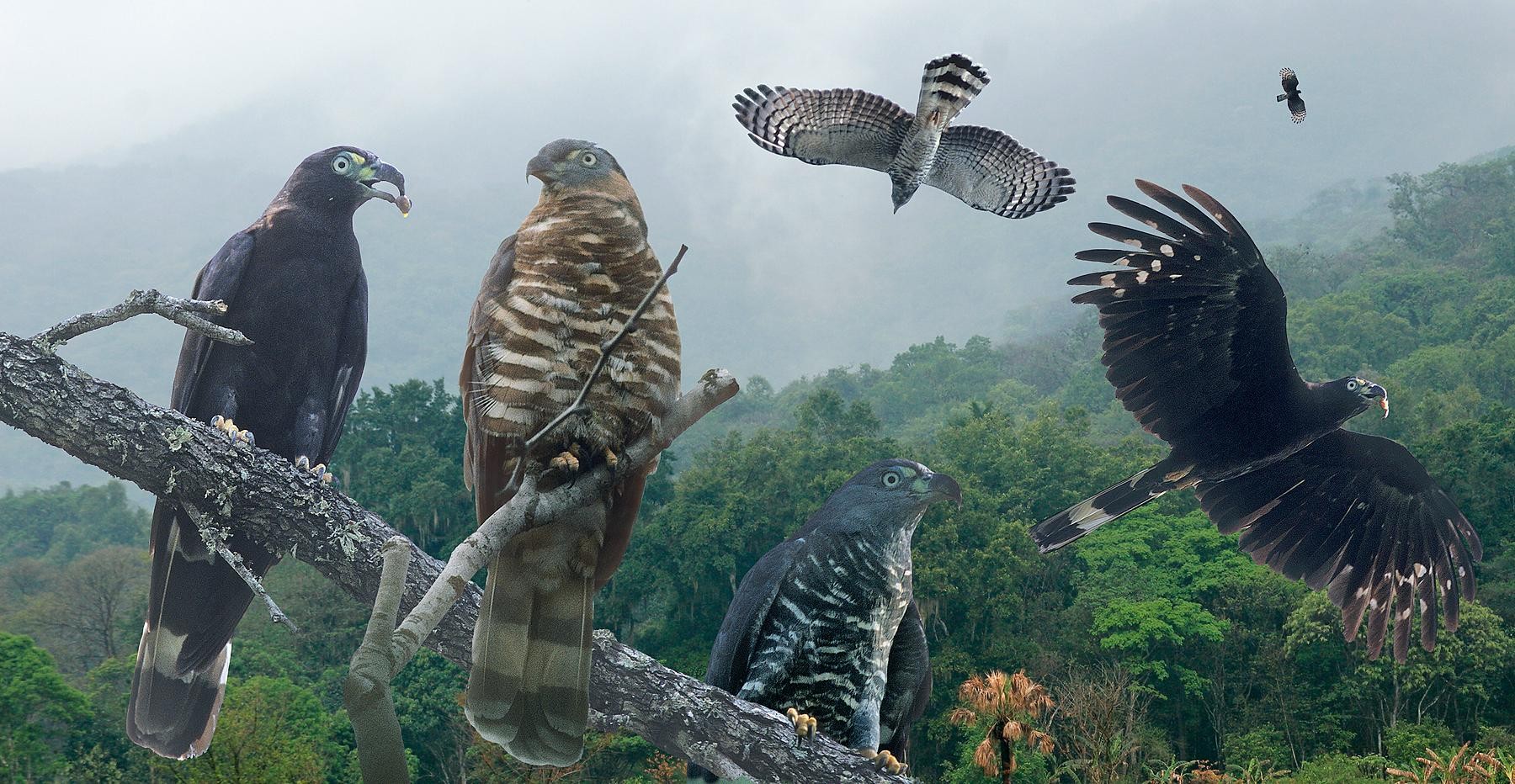Hook-billed Kite
A species of Hook-billed Kites Scientific name : Chondrohierax uncinatus Genus : Hook-billed Kites
Hook-billed Kite, A species of Hook-billed Kites
Botanical name: Chondrohierax uncinatus
Genus: Hook-billed Kites
Content
Description General Info
 Photo By Richard Crossley , used under CC-BY-SA-3.0 /Cropped and compressed from original
Photo By Richard Crossley , used under CC-BY-SA-3.0 /Cropped and compressed from original Description
The hook-billed kite (Chondrohierax uncinatus), is a bird of prey in the family Accipitridae, which also includes many other diurnal raptors such as kites, eagles, and harriers. It occurs in the Americas, including the Rio Grande Valley of Texas in the United States, Mexico, the Caribbean, Central America, and tropical South America. It is a mid-sized, slender raptor with an invariably striped belly and banded tail but there is probably more individual variation in color and in size of bill than in any other species of diurnal raptor. Birds from beneath can look blackish or gray (especially males) and brown or brick-red (females) variously. This renders species identification at times extremely difficult. The downcurved hook at the tip of the beak is apparent on perched and low-flying birds. Weight can range from 215 to 397 g (7.6 to 14.0 oz) and length is 38–51 cm (15–20 in). Tree snails are this raptor's favorite prey but frogs, salamanders, small mammals and insects are also taken. When it finds a tree snail it holds it with its talon and uses its beak to pry open the shell. The nest, a flimsy platform of sticks, is built by both sexes. The hook-billed kite lays two to three buff-white eggs marked with red-brown. Incubation is by both sexes. Semialtricial young stay in the nest 35–45 days and are fed by both sexes. This raptor is often considered sluggish and retiring, preferring to perch inside leafy canopy when not flying. The critically endangered Cuban kite, C. wilsonii, is considered by some authors to be a subspecies of the hook-billed kite. 
Size
41-46 cm (16-18 in)
Nest Placement
Tree
Clutch Size
1 - 2 eggs
Incubation Period
1 brood
Number of Broods
30 - 35 days
Nestling Period
24 - 38 days
Feeding Habits
Hook-billed Kite primarily consumes tree snails, supplemented by insects, aquatic snails, crabs, frogs, and salamanders. They skillfully forage in tree canopies and utilize specific perches to crack open snail shells. Some hunt aerially, while others exhibit acrobatic maneuvers to access prey in challenging locations.
Habitat
Hook-billed Kite typically inhabit subtropical and tropical regions, favoring forests near water sources like wooded streams and lowland rainforests. These birds are found from sea level to high elevations, exceeding 10,000 feet in the Andes. They thrive in diverse vegetation types, including dry to moist montane forests, shrublands, and occasionally in man-made plantations. Notably, along the Rio Grande in Texas, hook-billed Kite frequent a variety of tree species, from Montezuma bald cypress to honey mesquite, often staying near watercourses but also venturing into drier mesquite areas.
Nest Behavior
Hook-billed Kite build nests in trees, lay eggs in these modestly sized nests despite their larger size, and participate in parental care, although the specifics of their egg-laying and care patterns are not detailed here.
Nest Characteristics
Hook-billed Kite's nests are platforms of sticks, located in the top half of trees at heights of 15 to 130 feet. They measure approximately 11.8 inches in diameter and 4.3 inches deep, lined with smaller twigs.
Dite type
Aquatic invertebrate eater
General Info
Feeding Habits
Bird food type
Behavior
Hook-billed Kite demonstrates remarkable aerial courtship, with loud calls and ascendings in tight circles, mimicking combat just above the treetops. Their rudimentary stick nests are often positioned near rivers, aligning reproduction with the rainy season to exploit snail abundance. Post-hatching, the division of labor shows females primarily incubating, while males provision food. This extended parental care persists well after fledging, highlighting a robust family unit and a strong investment in offspring survival, distinguishing hook-billed Kite in its intricate habitat interactions.
Species Status
Not globally threatened.